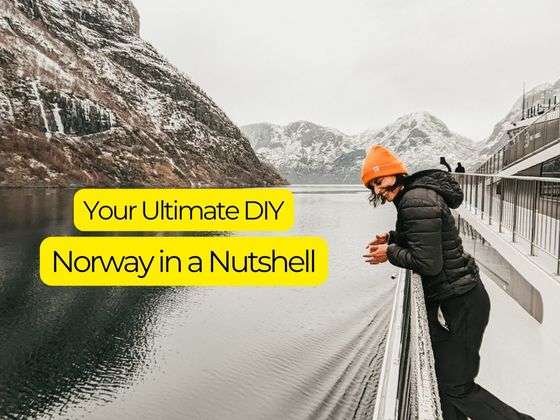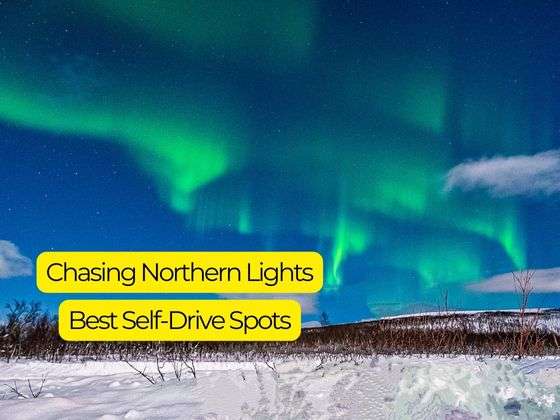Norway Travel Guides
Explore Norway
What is the best time of year to visit Norway?
The best time to visit Norway largely depends on your interests and what you want to experience. If you are seeking the famous Midnight Sun, the summer months from June to August are ideal. During this time, you’ll enjoy long days filled with outdoor activities, festivals, and vibrant cultural events. However, if you’re keen on witnessing the magical Northern Lights, then the winter months, particularly from late September to early April, offer the best chance.
Spring (March to May) and autumn (September to October) are excellent times for experiencing Norway’s stunning landscapes as they transition between seasons. During these shoulder seasons, there are fewer crowds, milder temperatures, and beautiful foliage.
What are the must-see attractions in Norway?
There’s so much to see and do in Norway, but my top things to do in Norway include:
- The UNESCO-listed fjords, such as the iconic Geirangerfjord and Nærøyfjord
- Bergen’s charming Bryggen Hanseatic Wharf, a UNESCO World Heritage Site
- Tromsø, known as the gateway to the Arctic and a prime location for Northern Lights viewing
- The scenic Lofoten Islands, famous for their dramatic landscapes and picturesque fishing villages
- The stunning Jotunheimen National Park, renowned for its majestic mountains and hiking trails
- The iconic Flåm Railway and the breathtaking Bergen Railway for unforgettable train journeys through Norway’s scenic countryside.
How expensive is Norway for travellers?
Norway is known for its high cost of living, and naturally, travel expenses can add up quickly. Accommodation, dining, and transportation are all pricey compared to other European countries. And the group tours in Norway have been by far the most expensive ones that I’ve been on. The minimum daily budget while travelling in Norway is $200 per person.
What are the Northern Lights, and where can I see them in Norway?
The Northern Lights, also known as the Aurora Borealis, are a natural phenomenon caused by the interaction between charged particles from the sun and the Earth’s atmosphere. Norway, especially its northern regions like Tromsø, Alta, and the Lofoten Islands, offers prime viewing opportunities for the Northern Lights. The best time to see them is during winter when the nights are long and dark. However, clear skies and minimal light pollution are essential for optimal viewing conditions. You can either join a tour group or hire a car and go on a self-drive hunt for northern lights. I’ve mapped out some exclusive points for a self-drive northern light chase.
What are some traditional Norwegian dishes I should try?
Norwegian cuisine is characterized by its use of fresh, locally sourced ingredients, particularly seafood, game meats, and dairy products. Some traditional dishes to try include:
- Gravlaks (cured salmon)
- Fårikål (lamb and cabbage stew)
- Rakfisk (fermented trout)
- Kjøttkaker (Norwegian meatballs)
- Rømmegrøt (sour cream porridge)
- Lutefisk (dried fish treated with lye)
Don’t forget to indulge in Norwegian brown cheese (brunost) and lefse (traditional potato flatbread) for a taste of authentic Norwegian flavours.
What outdoor activities are popular in Norway?
Norway’s stunning natural landscapes offer endless opportunities for outdoor adventures. Popular activities include:
- Hiking in national parks like Jotunheimen, Rondane, and Hardangervidda
- Skiing and snowboarding in world-class resorts such as Trysil, Hemsedal, and Geilo
- Kayaking or canoeing in the fjords or along the coast
- Wildlife safaris to spot Arctic animals like reindeer, polar bears, and whales
- Cycling along scenic routes like the Rallarvegen or the Atlantic Road
- Fishing for salmon, trout, or Arctic char in pristine rivers and lakes
Norway is easily my top 3 countries for outdoor activities.
How many days should my Norway itinerary be for?
To experience Norway’s highlights comfortably, I recommend planning a 10-day Norway itinerary. For a more in-depth exploration or if you’re interested in visiting remote regions like Svalbard or the Lofoten Islands, consider extending your trip to two weeks or more. If you are looking for a Norway custom travel itinerary, fill out this form.
What are the best hiking trails in Norway?
Norway boasts an extensive network of hiking trails, some of the best hiking trails in Norway include:
- The Besseggen Ridge Trail in Jotunheimen National Park is renowned for its breathtaking views of Gjende Lake and surrounding peaks.
- The Trolltunga Trail near Odda features the iconic Trolltunga (Troll’s Tongue) rock formation overlooking stunning fjord scenery.
- The Preikestolen (Pulpit Rock) Trail near Stavanger leads to a dramatic cliff with panoramic views over Lysefjord.
- The Romsdalseggen Ridge Trail near Åndalsnes offers exhilarating views of the Romsdalsfjord and surrounding mountains.
- The Kjeragbolten Trail, also near Stavanger leads to a massive boulder wedged between two cliffs with vertigo-inducing views.
Can I visit Svalbard without a guide?
While it’s technically possible to visit Svalbard without a guide, it’s strongly recommended to join organized tours or expeditions, especially if you’re not familiar with the Arctic environment. Svalbard’s remote location, extreme weather conditions, and the presence of polar bears make it potentially hazardous for unguided travellers. Licensed guides offer valuable expertise, ensuring


